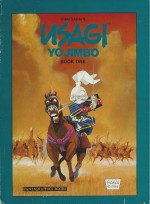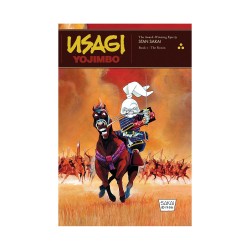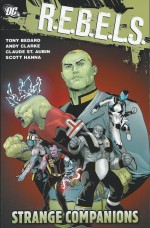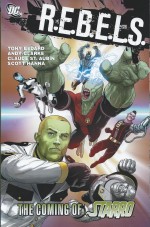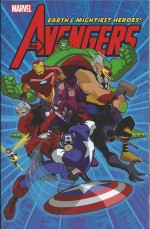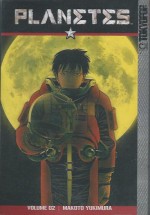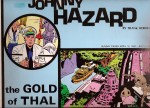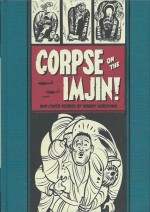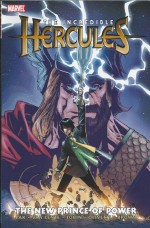
By Greg Pak, Fred Van Lente, Ariel Olivetti, Paul Tobin, Reilly Brown, Jason Paz, Terry Pallot, Zach Howard, Adam Archer & various (Marvel)
ISBN: 978-0-7851-4370-3
Comicbook Fights ‘n’ Tights dramas are serious business – but they don’t have to be.
There are too few light-hearted adventure comics around for my liking. Have readers become so sullen, depressed and angst-ridden that it takes nothing but oceans of blood and devastating cosmic trauma to rouse them?
Let’s hope not since we all adore a modicum of mirth with our mayhem, and let’s be honest, there are lashings of sheer comedic potential to play with when men-in-tights  – or in the Lion of Olympus’ case, a very short skirt and leather bondage-leggings – start hitting each other with clubs and cars and buildings.
The contemporary Marvel iteration of Hercules first appeared in 1965’s Journey into Mystery Annual #1, wherein Thor, God of Thunder fell into the realm of the Greek Gods and ended up swapping bombastic blows with the happy-go-lucky but easily-riled Hellenic Prince of Power in the Stan Lee/Jack Kirby landmark ‘When Titans Clash! Thor Vs. Hercules!’
Since then the bombastic immortal warrior has bounced around the Marvel Universe seeking out other heroes and heated fisticuffs as an Avenger, Defender, Champion, Renegade, Hero for Hire and any other super-squad prepared to take the big lug and his constant, perpetual boozing, wenching, bragging and blathering about the “Good Old Daysâ€â€¦
In recent years Herc got a good deal more serious, becoming a far more conventionally po-faced world-saver and even found himself a protégé – don’t call him “sidekick†– in keen teen Amadeus Cho, notionally the Seventh Smartest Person on Earth.
This deliciously wicked and engaging collection, gathering often inappropriate and simultaneously stirring and uproarious contents of Hercules: Fall of an Avenger #1-2 and the follow-up 4-issue miniseries Heroic Age: Prince of Power from 2010, is actually the prequel to a larger epic event but self-contained enough and so entertaining that readers won’t mind or feel short-changed.
The drama unfolds in the aftermath of the mighty man-god’s apparent death with the aforementioned ‘Hercules: Fall of an Avenger’, by writers Greg Pak & Fred Van Lente with art by Ariel Olivetti, as many of the Gods and mortals touched by the life of the departed legend gather at the Parthenon for a wondrous wake to memorialise his passing.
Athena now rules the gods ofOlympus and turns up stylishly late as the gathering share personal tales of the departed legend.
Whilst the he-man heroes such as Thor, Bruce Banner, Skaar, Son of Hulk, the Warriors Three, Wolverine, Angel, and Sub-Mariner dwell on their comrade’s fighting spirit, the women such as Namora, Black Widow, Inuit goddess Snowbird and Alflyse, Queen of the Dark Elves prefer to share fond reminiscences of his other prowess – despite the blushes of the congregation.
However just as Cho prepares to speak his own thoughts, Athena and the remaining Hellenic Pantheon materialise and announce the boy is to be the new commander of the globe-spanning corporation known as the Olympus Group, becoming the next Prince of Power to act as the god’s representative on Earth…
Before Amadeus can react, Athena’s decree leads to a minor rebellion in her own ranks as Apollo challenges her and the assemblage degenerates into another epic brawl. Cho doesn’t care and uses the distraction to act on a suspicion that Hercules is not actually dead. His search of Hades, however, proves fruitless…
One of the smartest humans alive, Amadeus acquiesces and takes control of the Olympus Group to further his own agenda, but makes no secret of his dislike and mistrust of Athena…
Further repercussions of Hercules’ demise are seen when Namora and fellow Agent of Atlas Venus (a seductive Greek Siren, only recently promoted to actual love goddess) are dispatched by Athena to set the Man-God’s earthly affairs in order. Over the millennia the big-hearted, happy warrior accrued vast wealth and used it to set up businesses, trusts, foundations and charities, but now the Queen of Olympus wants to absorb the profitable ones and shut down the lame ducks.
As they track down his holdings and inform administrators of the situation, the grieving wonder women uncover an unsuspected ‘Greek Tragedy’ (by Paul Tobin, Reilly Brown & Jason Paz) on a lost Greek island – a cash-sucking black hole of an orphanage caring for children who just happen to be the innocent spawn of the many monsters Hercules slew in his voyages.
How then can Namora and Venus obey the dictates of the hard-hearted Athena and still honour the spirit of their soft-hearted former lover…?
‘Heroic Age: Prince of Power’ (Pak, Van Lente, Brown, Zach Howard, Adam Archer & Pallot) then occupies the major portion of this chronicle following the progress of Cho as he settles into the uncomfortable role of divine Prince of Power and mortal Chairman of the Board. His first order of business is to divert vast funds into searching the multiverse for Hercules…
Athena’s driving motivation for recruiting Amadeus is that an Age has passed on Earth: where once brute strength was the defining characteristic of the era, the Modern Age is subject to the force of intellect. The new Prince of Power must reflect the reliance on Reason and Intelligence, especially since a long-prophesied “Great Chaos†is coming…
A cosmic congress of pantheons convenes to select a mortal to lead the fight against the on-coming threat and, after much debate, Athena gets her way: clever kid Amadeus Cho is expected to save the entirety of creation…
On Earth the unsuspecting and intolerably obnoxious seventeen-year-old is dealing with lesser problems whilst working towards his own ultimate goal – rescuing Hercules from wherever he’s gone…
The most pressing of these daily duties is defeating mutated maniac the Griffin and saving an amusement park from becoming lunch, just the latest in a procession of monsters acting as vanguards for the approaching Chaos King…
Another problem is that he’s had to lock up his girlfriend Delphyne – Queen of the Gorgons – for trying to assassinate Athena, so when Vali Halfling (son of Asgardian god of Evil Loki) comes calling offering the secret of ultimate divine power, the distracted Cho is understandably intrigued, although not enough to fall for the trickster’s devious scheme…
The vile demigod wants to gather mystical elements from assorted pantheons (Greek, Norse, Egyptian and Hindu) to create a potion that will deliver ultimate divine power and enable the upstart kids to eliminate all other deities, but Cho isn’t fooled and rather than fall for a dishonest alliance he sets out to beat Vali to the ingredients – Hellenic Ambrosia, the Apples of Idunn, the Book of Thoth and Moon-cup of Dhanvantari. The race commences in ‘Blasphemy Can be Fun’ and, after pausing for ‘The Origin of Hercules’ by Van Lente, Ryan Stegman, Michael Babinski, continues with Cho’s one-man invasion of Asgard in ‘Valhalla Blues’.
The neophyte Prince of Power has no idea that he’s been played, and whilst clashing with former idol Thor for the Apples his rival already possesses, Halfling and his super-powered human Pantheon invades and seizes control of the Olympus Group headquarters to grab the Nectar of the Gods…
After a spectacularly pointless battle Thor and Cho unite to stop Vali, heading to the EgyptianLandof the Dead to grab the Book. Again they are too late and their outrageous clash with cat-goddess Sekhmet in ‘Our Lady of Slaughter’ only allows Halfling to come closer to his ultimate goal.
With the old gods on the back foot and Athena close to death, the fate of Cho’s people falls to the furious and lethally ticked off Delphyne…
It all comes to a shattering close in ‘Omnipotence for Dummies’ as Cho ultimately and brilliantly outwits everybody, wins ultimate power, retrieves Hercules from his uncanny fate and promptly surrenders all his divine might to the returned Man-god. He has to: the Chaos King has arrived to annihilate All Of Reality and the situation demands a real hero…
To Be Continued…
With covers and variants by Olivetti, Humberto Ramos, Edgar Delgado, Khoi Pham, Carlo Pagulayan, Paz, Peter Steigerwald, Salva Espin & Beth Sotelo plus pages of character designs by Brown, this bombastic, action-packed thriller also offers scenes of genuine tear-jerking poignancy and hilarious moments of mirth (the tale is especially stuffed with saucy moments of the sort that make grandmothers smirk knowingly, and teenaged boys go as red as Captain America’s boots). An absolute joy for older fans, this epic is also a great example of self-contained Marvel Magic, funny, outrageous, charming and full of good-natured punch-ups.
This is a rare but welcome instance of the company using the continuity without unnecessarily exposing newcomers to the excess baggage which may deter some casual readers from approaching long-running comics material, and if you’re looking for something fresh but traditional, you couldn’t do better than this superb slice of modern mythology.
© 2010 Marvel Characters Inc. All rights reserved.

